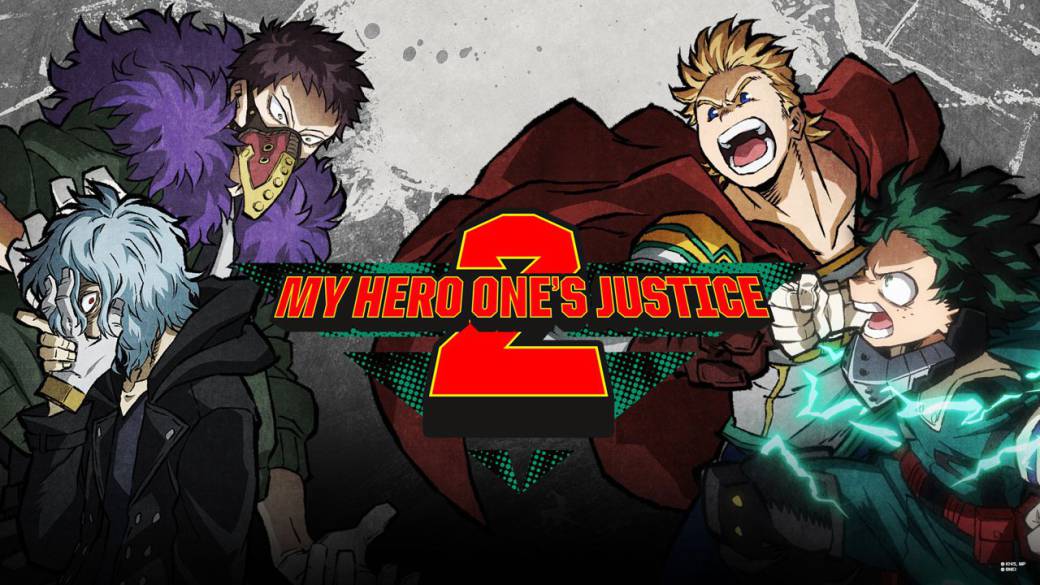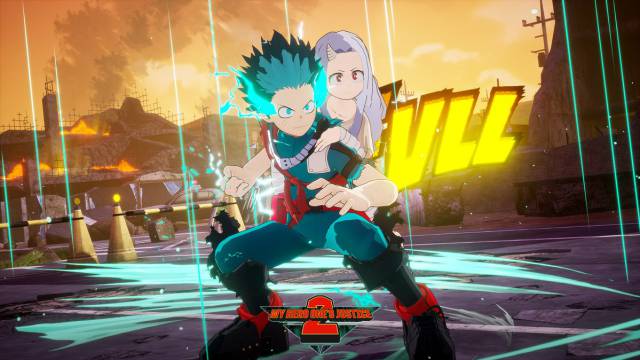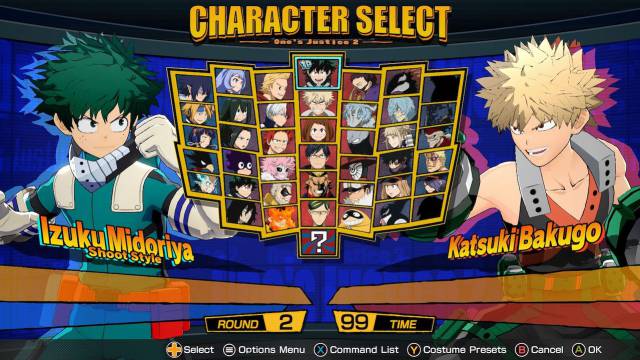
The most popular superheroes in Japanese comic strikes again with a sequel to their arena-style fighting game that features a large roster of characters, but few new features.
The manganime industry often has recurring aftershocks in the video game industry. Titles that in most cases prioritize captivating the follower of the series in question, above obtaining recognition from the general public. Starting with the 128-bit generation, two genres stand out above the rest in this type of adaptation: the musou and the arena fighter. My Hero One’s Justice 2 is part of the second, and it leaves us feeling like an absolute ‘déjà vu’.
My Hero Academia, known in Japan as Boku no Hero Academia, is a popular shonen manga by author Kohei Horikoshi. In development since 2014, the story stands out for presenting something so characteristic of western comics and, especially, of the North American as superheroes, but in an environment as alien to this type of stories as Japan, beyond the genre tokusatsu (Ultraman, Kamen Rider …).
On a planet where most human beings are born with a 'gift', our protagonist, Izuku Midoriya, is the exception. Despite this, his momentum and ambition cause the greatest superhero of all time, All Might, to notice him and transfer the One For All, a gift that can be passed from one user to another through DNA. Thanks to this, Midoriya is able to enter the U.A.Academy, an elitist learning center for aspiring superheroes. Under this premise, the story of this manganime begins in broad strokes, which in this sequel to his fighting video game takes us to the arc that has Kai ‘Overhaul’ Chisaki as the main villain.
So far, My Hero Academia has the My Hero: One's Justice saga as its greatest supporter in the video game industry, but Midoriya, All Might, Bakugo and company have also had titles on Nintendo 3DS, mobile devices, Arcade machines or appearance in titles like Jump Force. Without the popularity of other great manga shonen like Naruto or One Piece, the most popular manganime superheroes continue to write their young story in the industry.
A sequel with little news

My Hero: One’s Justice 2 is a sequel with few new features, but it stands out thanks to a graphic section that works its best thanks to Unreal Engine 4 and simple but direct and entertaining gameplay. By Bandai Namco, Byking has been in charge of developing a new installment of the saga, too continuous and that seems especially designed for all those who enjoyed its predecessor.
The story mode presents a development in cartoons with which we will learn how events unfold from the point of view of heroes or villains. In it we advance while fighting against the different characters, in what turns out to be a game mode without excessive depth and that can serve to let fans know a little more about some of the protagonists and antagonists.
Mission mode is possibly the most interesting part of this second installment. We were able to enjoy it in the first one, and here it gives us an extra important replayability, forming teams based on the compatibility <of the characters to empower them and progressing on a map while we finish with the rest of the opponents. A kind of ‘survival’ mode with a notorious strategic factor.

A traditional Arcade mode and offline and online multiplayer provide that much-needed extra in any competitive title. The online game is divided into qualifying and non-qualifying games, thus being able to raise our rank or play in a more casual way in front of players from all over the world.
Huge roster of characters

My Hero: One’s Justice 2 brings out muscle especially in its roster of characters, and is that with a total of 40 it practically doubles its predecessor with 18 new characters. Being able to enjoy the full power of Mirio Togata, Sir Nighteye or Kai Chisaki is an experience that fans of the series will appreciate. The possibility of raising teams of three gives greater value to this large group, thus being able to enjoy all of them more regularly.
Another generic ‘arena fighter’
Most manganime licenses that are transferred to the video game usually adopt fighting as a recurring genre and, within it, the ‘arena fighter’ are one of the most recurring options. The Naruto Ultimate Ninja Storm saga, developed by CyberConnect2 is possibly the greatest exponent of how to develop quality titles within this style; while Dragon Ball Z Budokai Tenkaichi would be another outstanding saga.

Arena fighters are generally shallow, simple and direct games that emphasize spectacularity and a large squad in which no one is left out of the game. Come on, games that mainly seek to captivate the fan. An overly simple combos system that allows us to chain explosive combinations without too much effort, destroy the scenarios in our path and invoke allies in battle (teams of three) that support us while we fight. A special attack, Plus Ultra, will allow us to carry out the most powerful attacks in the game as we fill the bar of it. In addition, we can combine this with our team allies and thus trigger a perfect storm on our rivals.
Fighting games are one of the genres that are more accessible on paper to the naked eye in the world of video games, but they are usually the opposite. Huge complexity and depth, and a headache for any developer when it comes to managing, developing, and balancing all the characters. Arena fighters are notoriously different from more traditional fighting games, you just have to see their gigantic rosters, an excess that can be allowed because despite the notorious differences between them, the combos system is usually redundant. These advocate a simplicity that in many occasions is a point in favor, but not in the case of My Hero One's Justice 2, which abuses a model seen too many times and that yes, can make us enjoy for several hours, but ends excessively accusing his limitations.
Direct fun

The game requires minimal effort from the player, with a simplified combos system to the maximum and in which any combination will come out almost without knowing it. This fact is ideal to share the fun with any of our friends, but a negative aspect in that we want to delve into it or stand out online.
Each character is worked and has very different abilities and movements, and the settings stand out for how destructible they are, perhaps too much. Everything breaks in an extreme way, which is normal given the power that our characters have, but in many cases they end up turning the arenas into gigantic squares with practically nothing around.
CONCLUSION
My Hero: One’s Justice 2 does not surprise or innovate with respect to its previous installment. A sequel with little incentive beyond progressing in the history of the popular manganime and enjoying a superior roster of characters. Direct fun on which any player can highlight and develop the full potential of the characters, but that after a few hours notoriously accuses that lack of depth.
THE BEST
- A huge roster of characters. Nobody is missing.
- The spectacular nature of the fighting: powers, destruction …
- Its simplicity can make us enjoy against anyone
WORST
- Little news in this second installment
- Simplicity takes a lot of depth out of the game
